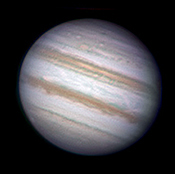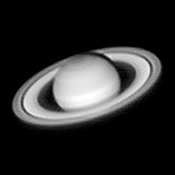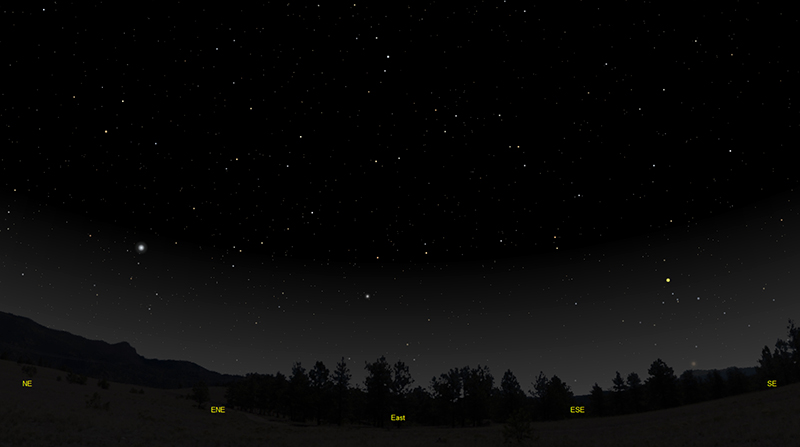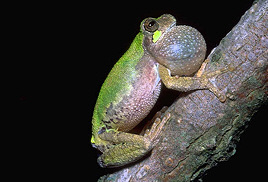The purpose of this feature is to give scout leaders, educators and naturalists an idea of some of the natural events coming up each month. We will try to cover a variety of natural events ranging from sky events to calling periods of amphibians, bird and mammal watching tips, prominent wildflowers and anything else that comes to mind. We will also note prominent constellations appearing over the eastern horizon at mid-evening each month for our area for those who would like to learn the constellations. If you have suggestions for other types of natural information you would like to see added to this calendar, let us know! Note: You can click on the hyperlinks to learn more about some of the featured items. To return to the Calendar, hit the "back" button on your browser, NOT the "back" button on the web page. All charts are available in a "printer friendly" mode, with black stars on a white background. Left clicking on each chart will take you to a printable black and white image. Please note that images on these pages are meant to be displayed at 100%. If your browser zooms into a higher magnification than that, the images may lose quality. Though we link book references to nationwide sources, we encourage you to support your local book store whenever possible.
Notes and Images From April 2014
We sometimes encounter creatures that look totally alien to us. Such was the case on April 22nd, when Andrea found this White Banded Fungus Weevil (Eurymycter fasciatus) by our front porch. With the naked eye, we could tell that the face looked interesting, but we couldn't see any details - the field of view at right is only 1/8 inch wide. It was only afterward, when we zoomed into the image on the camera screen, that we saw what a strange creature was looking back at us. Fungus Weevils (Family Anthribidae) number around 3,000 species worldwide, with the distribution centered in the tropics. Despite their rather other-worldly appearance, these weevils are harmless, feeding on bracket fungi and mushrooms, and in some species, pollen.
On April 27th I installed a video camera on the finder for my observatory telescope. The finder assists in aiming the main telescope towards an observing target. By installing the video camera, I can see the finder field of view on a remote computer, which simplifies remote operation of the scope. The finder telescope is small, only two inches in diameter, with a focal length of about eight inches. Since it was the middle of the afternoon, I used the Moon to focus. After focusing I thought it might be fun to see if I could get an image of the Moon through the finder. I took about 40 seconds of video, then processed it with same software I use for my planetary imaging. I was pleasantly surprised to see that the finder actually did a pretty good job of capturing lunar detail, despite its small size. Many lunar maria are visible, including some hard to see maria that lie along the Moon's limb. Many craters are also visible. You can get nice images of the Moon with very little equipment and just about any size telescope, and the software used to capture and process the images is all free. A terrific tool for exploring the lunar surface is the free Virtual Moon Atlas.
Sky Events for May 2015: The Eta Aquariid Meteor Shower peaks in the early morning hours of May 6th. A waning gibbous Moon will tend to wash out faint meteors. Evening Sky: Venus shines bright in the evening sky after sunset all month long. At the beginning of the month, look for Mercury below and to the right of Venus. Mercury reaches greatest elongation from the Sun on May 6th. Begin looking for Mercury about 30 minutes after sunset. You will want a relatively flat western horizon. Mercury will be about 22 degrees, or about the distance between the tip of your thumb and the tip of your little finger (fingers spread) with your hand at arms length, from Venus on May 1st. Binoculars will help find it (use them only after sunset), but Mercury will be bright and obvious as the sky darkens. An added treat, if you find the planet in the first few days of May, is that the Pleiades are also in the same binocular field of view as Mercury. I had a pretty view of the Mercury and the Pleiades on April 30th, about 8:15pm CDT. This is a great chance to spot Mercury.
Jupiter slowly moves through Cancer this month. Look for it high in the southwest in the early evening. The cloud surface is constantly changing on Jupiter, and there's always something of interest to observe. The four "Galilean" moons are fun to watch from night to night and can be picked up in binoculars. Be sure to steady your arms against something solid to get the best view.
Evening Sky Into Morning:
Saturn rises about a little after 9:00pm CDT at the beginning of the month in Scorpius. Look for it low in the southeast. Saturn reaches opposition on May 22nd, and the planet will be brighter than it's been for eight years. Saturn's rings have opened up to more than 24 degrees tilt, giving a wonderful view of the ring system through just about any aperture telescope. Saturn transits around 1:18am CDT at mid-month, and you will get your best telescopic view around that time. The view at right was taken on March 24th and shows the wide open aspect of the rings. All times noted in the Sky Events are for Franklin, Tennessee and are in Daylight Savings Time. These times should be pretty close anywhere in the mid-state area.
Constellations: The views below show the sky looking east at 9:30pm on May 15th. The first view shows the sky with the constellations outlined and names depicted. Star and planet names are in yellow. Constellation names are in blue. The second view shows the same scene without labels. New constellations this month in the eastern sky are Lyra, the Lyre, with it's bright star Vega, Serpens Caput, the head of the Serpent, and Libra, the Scales. The red giant Antares (the name means Rival of Mars) is just making its way over the eastern horizon in Scorpius. Ophiuchus, the Serpent Bearer, is also climbing into view. Wait until Lyra is high in the sky, and then see if you can spot Messier 57, the Ring Nebula. Look for it a little over half the way from Gamma Lyra to Beta Lyra. A three inch aperture telescope will show this planetary nebula, which looks like a ghostly smoke ring.
On Learning the Constellations: We advise learning a few constellations each month, and then following them through the seasons. Once you associate a particular constellation coming over the eastern horizon at a certain time of year, you may start thinking about it like an old friend, looking forward to its arrival each season. The stars in the evening scene above, for instance, will always be in the same place relative to the horizon at the same time and date each May. Of course, the planets do move slowly through the constellations, but with practice you will learn to identify them from their appearance. In particular, learn the brightest stars (Like Vega and Antares in the above scene looking east), for they will guide you to the fainter stars. Once you can locate the more prominent constellations, you can "branch out" to other constellations around them. It may take you a little while to get a sense of scale, to translate what you see on the computer screen or what you see on the page of a book to what you see in the sky. Look for patterns, like the stars that make up the constellation Hercules. The earth's rotation causes the constellations to appear to move across the sky just as the sun and the moon appear to do. If you go outside earlier than the time shown on the charts, the constellations will be lower to the eastern horizon. If you observe later, they will have climbed higher. As each season progresses, the earth's motion around the sun causes the constellations to appear a little farther towards the west each night for any given time of night. If you want to see where the constellations in the above figures will be on June 15th at 9:30pm CDT, you can stay up till 11:30pm CDT on May 15th and get a preview. The westward motion of the constellations is equivalent to two hours per month. Recommended: Sky & Telescope's Pocket Star Atlas is beautiful, compact star atlas. A good book to learn the constellations is Patterns in the Sky, by Hewitt-White. You may also want to check out at H. A. Rey's classic, The Stars, A New Way to See Them. For skywatching tips, an inexpensive good guide is Secrets of Stargazing, by Becky Ramotowski. A good general reference book on astronomy is the Peterson
Field Guide,
A Field Guide to the Stars and Planets, by Pasachoff. The book retails for around $14.00. Starry Night has several software programs for learning the night sky. Visit the Starry Night web site at www.starrynight.com for details. The Virtual Moon Atlas is a terrific way to learn the surface features of the Moon. And it's free software. You can download the Virtual Moon Atlas here. Cartes du Ciel is a great program for finding your way around the sky. It is also free, and can be downloaded here. Apps: We really love the Sky Safari Pro application described here. For upcoming events, the Sky Week application is quite nice. Both apps are available for both I-phone and Android operating systems. The newest version, Sky Safari 4, is available from Play Store or from i-tunes.
Amphibians:
By the end of May all of Tennessee's frogs and toads are either calling or have already reached their peak calling period and are being heard less. The treefrogs are the last of our frogs and toads to start calling. Cope's Gray Treefrog and Gray Treefrogs start giving isolated calls as early as late February, and by the end of this month listen also for Bird-Voiced Treefrogs, Green Treefrogs and Barking Treefrogs. In May we also hear Fowler's Toads calling frequently, so listen for their "crying baby" call. Eastern Cricket Frogs are hitting their stride as well. Listen for a sound like two stones being tapped together. We have heard eight or more species of frogs calling on some May evenings, so it's a great time to listen. Upland Chorus Frogs and Spring Peepers continue to call. Listen for their calls to increase in pitch and quicken with the rising temperatures. Recommended: The Frogs and Toads of North America, Lang Elliott, Houghton Mifflin Co.
Archives (Remember to use the back button on your browser, NOT the back button on the web page!) Natural Calendar February 2015 Natural Calendar December 2014 Natural Calendar November 2014 Natural Calendar September 2014 Natural Calendar February 2014 Natural Calendar December 2013 Natural Calendar November 2013 Natural Calendar September 2013 Natural Calendar December 2012 Natural Calendar November 2012 Natural Calendar September 2012 Natural Calendar February 2012 Natural Calendar December 2011 Natural Calendar November 2011 Natural Calendar September 2011 Natural Calendar February 2011 Natural Calendar December 2010 Natural Calendar November 2010 Natural Calendar September 2010 Natural Calendar February 2010 Natural Calendar December 2009 Natural Calendar November 2009 Natural Calendar September 2009 Natural Calendar February 2009 Natural Calendar December 2008 Natural Calendar November 2008 Natural Calendar September 2008 Natural Calendar February 2008 Natural Calendar December 2007 Natural Calendar November 2007 Natural Calendar September 2007 Natural Calendar February 2007 Natural Calendar December 2006 Natural Calendar November 2006 Natural Calendar September 2006 Natural Calendar February 2006
Natural Calendar December 2005
Natural Calendar November 2005
Natural Calendar September 2005
Natural Calendar February 2005
Natural Calendar December 2004
Natural Calendar November 2004
Natural Calendar September 2004
Natural Calendar February 2004
Natural Calendar December 2003
Natural Calendar November 2003
Natural Calendar September 2003 Natural Calendar February 2003 Natural Calendar December 2002 Natural Calendar November 2002 Nature Notes Archives: Nature Notes was a page we published in 2001 and 2002 containing our observations about everything from the northern lights display of November 2001 to frog and salamander egg masses. Night scenes prepared with The Sky Professional from Software Bisque All images and recordings © 2015 Leaps
|







